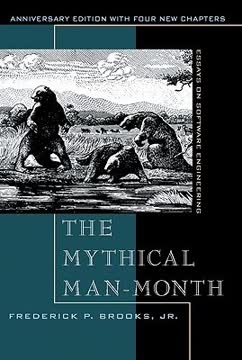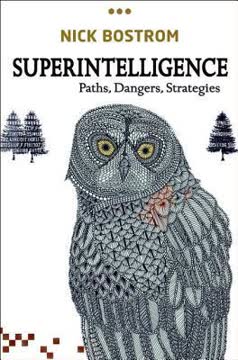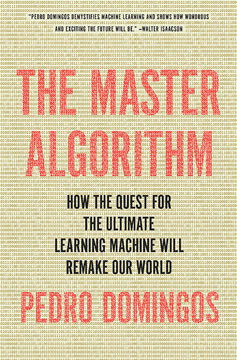重点摘要
第二次机器时代正在改变我们的经济和社会
“我们这一代将有幸经历历史上两件最惊人的事件:真正的机器智能的诞生和通过一个共同的数字网络连接所有人类,从而改变地球的经济。”
深刻的转变正在进行。 我们正在进入一个与工业革命同样重要的第二次机器时代。第一次机器时代是通过蒸汽动力和电力克服物理限制,而这个新时代则是通过数字技术克服我们心智的限制。
加速的变化。 技术进步的速度正在迅速加快:
- 无人驾驶汽车在短短几年内从不可能变为现实
- 计算机现在可以理解和回应人类的语言
- 机器人变得越来越有能力和类人
- 像IBM的Watson这样的人工智能系统在复杂任务中可以超越人类
这场技术革命正在重塑我们经济和社会的各个方面,从我们如何工作和交流到我们如何学习和创造。其影响深远而广泛。
数字技术是指数型、数字化和组合性的
“我们数字世界的密度和复杂性带来了风险。”
指数增长。 摩尔定律——计算能力大约每两年翻一番——仍然适用。这种数字技术的指数改进带来了几乎神奇的能力。
万物数字化。 随着我们世界的更多部分变得数字化和互联,我们看到了数据和数字内容的爆炸式增长:
- 每天发送超过3000亿封电子邮件
- 每天发布5亿条推文
- 每天观看40亿次YouTube视频
组合创新。 数字技术可以以新颖的方式混合和匹配,导致快速创新。关键例子:
- 智能手机结合了计算、GPS、相机、传感器等
- 像Uber和Airbnb这样的共享经济平台利用数字网络
- 3D打印结合了数字设计和新制造技术
这种组合性加速了创新的步伐,带来了意想不到的突破。
人工智能和全球互联是游戏规则的改变者
“当‘赢家通吃’的市场变得更加重要时,收入不平等将上升,因为顶层的薪酬将远远超过中层的薪酬。”
人工智能革命。 人工智能正在迅速进步,机器现在能够执行复杂的认知任务:
- 图像和语音识别
- 自然语言处理
- 复杂问题解决和决策
这对自动化和工作的未来有深远影响。
全球数字网络。 互联网和移动技术已经将全球数十亿人连接起来:
- 全球超过40亿互联网用户
- 50亿手机用户
- 即时的全球通信和信息共享
新机遇。 人工智能和互联性的结合创造了巨大的机遇:
- 全球协作和创新
- 数十亿人的知识和教育获取
- 新的商业模式和经济范式
但它也带来了诸如工作替代和数字经济中的赢家通吃动态等挑战。
技术在经济中创造了丰裕和分化
“GDP和生产力增长很重要,但它们是手段,而不是目的。”
增加的丰裕。 数字技术正在创造巨大的经济价值并改善我们的生活质量:
- 更加实惠和高质量的商品和服务
- 以前难以想象的新产品和体验
- 各行业的生产力提升
增长的分化。 然而,收益并未均匀分布:
- 收入不平等加剧
- 工作极化——高技能和低技能工作的增长,中等技能工作的减少
- 许多数字市场中的赢家通吃动态
这种丰裕与分化之间的紧张关系是第二次机器时代的一个定义特征。虽然整体经济蛋糕在增长,但越来越多的份额正在流向少数人,许多人被抛在后面。
创意和大框架模式识别等技能仍然有价值
“我们从未见过真正有创意的机器,或创业的机器,或创新的机器。”
人类优势。 尽管人工智能进展迅速,人类仍然保留着关键优势:
- 创造力和创意
- 复杂的沟通和情感智能
- 在新情境中的适应性和问题解决能力
互补技能。 最成功的工人将把他们独特的人类技能与技术能力结合起来:
- 由数据驱动的决策与人类判断相结合
- 设计思维与先进的数字工具结合
- 在技术支持的组织中领导和团队合作
教育的必要性。 发展这些互补的人机技能至关重要:
- 在教育中注重创造力、批判性思维和适应性
- 终身学习以跟上技术变化的步伐
- 将技术知识与广泛的跨学科思维结合起来
教育和创业是适应的关键
“自从经济学家约瑟夫·熊彼特在二十世纪中期关于资本主义和创新本质的开创性工作以来,创业一直是经济学101的一个重要部分。”
重新思考教育。 我们的教育系统必须进化以准备人们迎接第二次机器时代:
- 强调创造力、问题解决和适应性
- 在整个课程中整合技术
- 注重终身学习和再培训
促进创业。 新企业对创造就业和创新至关重要:
- 减少创业障碍
- 改善企业家获取资本和资源的途径
- 为初创企业和创新创造支持性生态系统
政策优先事项:
- 投资于研究和开发
- 改善STEM教育,同时强调创造力
- 支持工人再培训和过渡援助
我们必须重新思考数字时代的经济指标和政策
“因为这些服务是免费的,它们在官方统计中几乎是看不见的。它们为经济增加了价值,但没有增加GDP。”
超越GDP。 传统的经济指标如GDP未能捕捉到数字经济创造的许多价值:
- 免费的数字服务(如谷歌、维基百科)
- 生活质量和便利性的改善
- 环境和社会影响
需要新指标。 我们需要新的方法来衡量经济进步和福祉:
- 数字经济指标
- 生活质量和幸福感衡量
- 可持续性和不平等指标
政策影响。 随着工作和价值创造的性质发生变化,政策必须适应:
- 重新思考社会安全网和收入支持
- 考虑数字和无形资产的税收政策
- 适应数字时代的知识产权法
技术进步带来了风险但也带来了巨大的潜在利益
“我们可以收获前所未有的丰裕和自由,或者经历人类历史上最大的灾难。”
潜在风险:
- 工作替代和经济动荡
- 不平等加剧和社会紧张
- 隐私和安全问题
- 来自高级人工智能的存在性风险
巨大的机遇:
- 医疗和寿命的显著改善
- 解决气候变化等全球挑战
- 前所未有的知识和教育获取
- 人类创造力和探索的新前沿
塑造我们的未来。 第二次机器时代的结果并非预先确定。通过在政策、教育和创新方面做出明智的选择,我们可以利用这些技术的巨大潜力,创造一个更加繁荣、公平和充实的未来。
最后更新日期:
FAQ
What's The Second Machine Age about?
- Focus on Technology's Impact: The book explores how digital technologies, especially AI and computers, are reshaping economies and societies. It marks the transition from the first machine age, driven by physical power, to the second, characterized by mental power and digital innovation.
- Bounty and Spread: Introduces "bounty," the abundance from technological advancements, and "spread," the growing inequality in wealth and income distribution due to these changes.
- Future Implications: Discusses the effects on individuals, businesses, and policymakers, emphasizing the need for new strategies to handle rapid technological progress.
Why should I read The Second Machine Age?
- Understanding Modern Changes: Offers insights into how technology is transforming work, productivity, and economic structures, affecting everyday life and future job markets.
- Informed Decision-Making: Provides recommendations for adapting to the evolving landscape of work and technology, empowering informed career or business decisions.
- Engaging Examples: Uses engaging examples and anecdotes to make complex ideas accessible and relatable.
What are the key takeaways of The Second Machine Age?
- Exponential Growth of Technology: Highlights that technological progress is exponential, leading to rapid societal changes, exemplified by Moore's Law.
- Digital Goods and Non-Rivalry: Explains that digital goods are non-rival with near-zero marginal costs, challenging traditional economic models.
- Inequality and Job Displacement: Discusses how technological advancements can increase inequality, concentrating benefits among a few and challenging workers in routine jobs.
What are the best quotes from The Second Machine Age and what do they mean?
- “Technology is a gift of God.”: Highlights technology's transformative power in shaping civilizations and improving life, underscoring its potential to drive progress.
- “Any sufficiently advanced technology is indistinguishable from magic.”: Reflects the awe new technologies inspire, suggesting advanced tech may seem miraculous to those unfamiliar with it.
- “The greatest shortcoming of the human race is our inability to understand the exponential function.”: Emphasizes the struggle to grasp exponential growth, crucial for understanding rapid technological changes.
How does The Second Machine Age define "bounty" and "spread"?
- Bounty Explained: Refers to the abundance of goods, services, and opportunities from technological advancements, signifying positive economic effects like increased productivity.
- Spread Defined: Highlights growing inequality in wealth and income distribution accompanying technological progress, pointing to disparities in who benefits from innovations.
- Interconnected Concepts: Argues that while bounty can lead to economic growth, it can also exacerbate social inequalities, necessitating policy interventions for equitable distribution.
What is Moore's Law as discussed in The Second Machine Age?
- Definition of Moore's Law: Observes that the number of transistors on a microchip doubles approximately every two years, leading to exponential computing power growth.
- Implications for Technology: Drives economic growth and productivity by enabling increasingly powerful and efficient technologies, a key driver of the second machine age.
- Historical Context: Has held true for over four decades, influencing various sectors and industries, central to the computer age.
How does The Second Machine Age address the challenges of inequality?
- Recognition of Inequality: Acknowledges that technological advancements can lead to increased inequality, concentrating benefits among a small group.
- Policy Interventions: Discusses the need for interventions like improved access to education and training for vulnerable workers to ensure broader benefits from technological progress.
- Long-Term Solutions: Advocates for solutions promoting inclusive growth, essential for sustaining economic progress and social stability amid rapid technological change.
What role does artificial intelligence play in The Second Machine Age?
- AI as a Transformative Force: Key driver of the second machine age, enabling machines to perform cognitive tasks once thought exclusively human.
- Applications of AI: Examples like IBM's Watson in healthcare and OrCam for the visually impaired show AI enhancing human capabilities and quality of life.
- Future Prospects: As AI advances, it will increasingly shape the economy and society, raising ethical concerns and potential job displacement issues.
How does The Second Machine Age suggest we measure economic progress?
- Limitations of GDP: Argues traditional measures like GDP fail to capture the full value of digital goods and services, leading to misleading economic well-being conclusions.
- Consumer Surplus as a Metric: Proposes using consumer surplus to measure economic progress, reflecting the value individuals derive from goods and services relative to cost.
- Need for New Metrics: Calls for developing metrics accounting for intangible assets and digital technologies' impact on well-being for a clearer economic progress picture.
What is the "strong bounty" argument presented in The Second Machine Age?
- Focus on Overall Improvement: Suggests rising inequality may be less concerning if overall economic conditions improve for everyone, even if benefits are unevenly distributed.
- Counterpoint to Inequality Concerns: Argues that if lower-income groups see quality of life improvements, focusing on income disparity may be misplaced.
- Critique of the Argument: Challenges this view with data showing many losing ground in absolute terms, indicating inequitable technology benefits.
How does globalization relate to the themes in The Second Machine Age?
- Globalization's Impact on Jobs: Discusses how globalization, alongside technology, contributes to job displacement and wage stagnation, especially in manufacturing.
- Competition from Abroad: Explains that global hiring pressures local labor markets, leading to wage declines in certain job categories.
- Interplay with Technology: Argues that while globalization is significant, rapid technological innovation is a more critical economic change driver.
How do the authors suggest we prepare for the future of work in The Second Machine Age?
- Emphasize Education and Skills: Advocates for education fostering creativity, critical thinking, and adaptability to thrive in a technology-driven economy.
- Encourage Entrepreneurship: Highlights supporting startups and innovation to create new job opportunities and drive economic growth.
- Policy Recommendations: Proposes measures like a negative income tax and improved education access to mitigate technological change effects on the workforce.
评论
读者们发现这本书对人工智能和自动化如何重塑经济进行了引人入胜且发人深省的探讨。许多人欣赏书中对技术进步的利弊进行了平衡的视角分析。一些人认为政策建议有些模糊,但总体上赞扬了这本书对智能机器时代工作和社会未来的洞见。通俗易懂的写作风格使复杂的经济概念对普通读者来说也变得易于理解。
Similar Books











